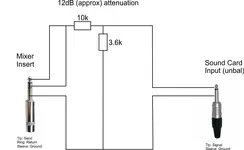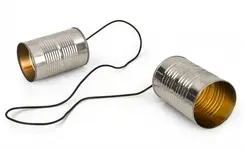M
MagicMatt
New member
I have a Peavey PV14 mixer that we use with the band when we perform live. It's used for vocals, and to provide a bit of extra volume for the drums, and the bass to spread the sound and reduce the booming effect in some rooms. As far as I can tell, the Inserts are TRS for send/return at +4dBu unbalanced.
I have an old 8-channel recording interface (DSP24 C-PORT Windows XP system) that has unbalanced line-level inputs, which I think are computer level (-10dBV).
My idea is that I could massively reduce the amount of equipment if I want to do a live recording, if I patch into the mixing desk, as then I could just use mics on the guitar amp and overhead on the drums into the Sound Card, and take the rest via a set of patch cables.
I've come up with this idea...

...would it work, or am I missing something or risking damaging anything through lack of knowledge?
I have an old 8-channel recording interface (DSP24 C-PORT Windows XP system) that has unbalanced line-level inputs, which I think are computer level (-10dBV).
My idea is that I could massively reduce the amount of equipment if I want to do a live recording, if I patch into the mixing desk, as then I could just use mics on the guitar amp and overhead on the drums into the Sound Card, and take the rest via a set of patch cables.
I've come up with this idea...

...would it work, or am I missing something or risking damaging anything through lack of knowledge?



